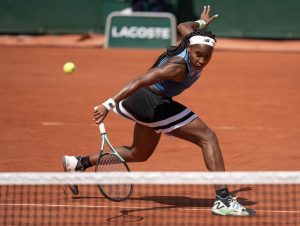The reviews and retrospectives of the second Laver Cup matches arrive this morning, just as the golf world begins to turn its eyes to the 42nd Ryder Cup matches scheduled to start this Friday in Paris, France. Following Team Europe’s 13-8 victory over Team World in the 2018 Laver Cup in Chicago, fans and pundits of tennis and golf will increase their comparisons and contrasts of these two team events. Casual comparisons are frequent; the Laver Cup is often being called “the Ryder Cup of Tennis.” The Laver Cup holds the potential of becoming a top tier world stage sporting event, but not just yet.
A Look at the Two Events
The Trivial
Not able or willing to forgo the money, Laver Cup players wear team colors but keep sponsorship on their clothing. Despite joining a single team, logos of popular clothing brands remain on “team” uniform shirts. An outdoor goods store logo gaudily appears on John Isner’s hat. Even the red of Team World’s Jack Sock contrasted slightly with doubles partner Nick Kyrgios on Saturday. Ryder Cuppers shun the weekly walking billboard look in favor of a logo free classy team uniform.
Of course, close observers wonder if uniforms are really needed for a captain and five separate vice captains on the 2018 Ryder Cup teams. Six captains for a team of 12 professional golfers? While each has an assistant captain, seeing Laver Cup leaders John McEnroe and Bjorn Borg captaining from the bench alone gives a nostalgic visual connection to tennis greats of years ago.
The black Laver Cup tennis court begins to give the tennis matches a definitive look. Used in very few tour events, the black court and team seating areas in both Prague and Chicago stand out from the week to week. Viewers familiar with blue hard court, green grass, or red clay along with lonely player benches are starting to connect the sharp black court and intensely supportive cheering teammates to the Laver Cup. Both are nice touches. Teammate support at the Ryder Cup is strong, but not as inherently intimate as the Laver Cup team benches.
The History
Simply lacking the time, the Laver Cup history can not match the Ryder Cup. Starting in 1927, the Ryder Cup has been contested 41 times. The matches are held every two years, save for postponing events such as war and terrorism. In 1969, Jack Nicklaus graciously conceded a short putt to Tony Jacklin halve the team match. In 1991, the American team pushed the envelope too far with their “War By the Shore” attitude in Kiawah, South Carolina. More recently, both the American Team and European Team staged staggering final day comebacks from 10-6 scores. Americans pulled the trick in 1999; Europe returned the favor in 2012.
The Laver Cup began building its own history during Team Europe’s victory in 2017. Replays of Rafael Nadal jumping into Roger Federer’s arms to celebrate as Team World players consoled a teary Nick Kyrigos following the cup clinching replay often on tennis channel. So too will the numerous match points saved by both teams in 2018. Hopefully, these are building blocks in developing Laver Cup history.
The Teams
Played every two years, both the American and European Ryder Cup teams are star studded and fully loaded. A spot on a 12-person Ryder Cup team is desired by nearly all top players in the United States and Europe. Every one of the world’s top 18 eligible players will tee it up in Paris this week.
The Laver Cup carried star power with Europe’s Roger Federer and Novak Djokovic as well as highly ranked world players Kevin Anderson and John Isner. Still, the draw of the event pales next to the Ryder Cup. World #1 Rafael Nadal decided not to play for Team Europe this year. Likewise, US Open finalist Juan Martin del Potro withdrew from playing for Team World. In the Laver Cup, the lure to participate is sweetened. Winning team players earn $250,000 plus somewhat mysterious “appearance fees” for all players. Despite this, some leading players do not play. While the allure of playing Laver Cup is strong, the Ryder Cup pull remains stronger.
The Competition
The competition structure in the Ryder Cup is superior to the Laver Cup. Both events are contested from Friday-Sunday and use a scoring system to ensure some Sunday afternoon drama. A deeper look shows the Laver Cup rules are a bit too contrived. The winning player or two person team of a Ryder Cup match gains one point. A team needs 14.5 points to secure victory in the 28 match event. In the Laver Cup, a single match win on Sunday awards a team three points toward the 13 needed to win the cup, the equivalent of three matches played on Friday.
Laver Cup Sunday stages only four of the 12 total matches, but counts for 50% of the points. With all Ryder Cup matches worth one point, the 12 singles matches played on Sunday are critical, but not skewed. In the Laver Cup, the ability for one team to win just five of 12 total matches and somehow take the cup rings a bit hollow.
But…
If the Laver Cup is tied at 12-12 after Sunday’s four matches an on the spot tiebreak decides the affair. The immediate one set doubles tiebreak holds potential for classic drama never witnessed at the Ryder Cup. In the Ryder Cup, a 14-14 tie is a halved team match with the previous event’s winner retaining possession of the Ryder Cup. This is a gentleman’s way of ending a competition, but nothing like an electric winner take all one set match between world stars. Let’s hope for one in Geneva in 2019.






